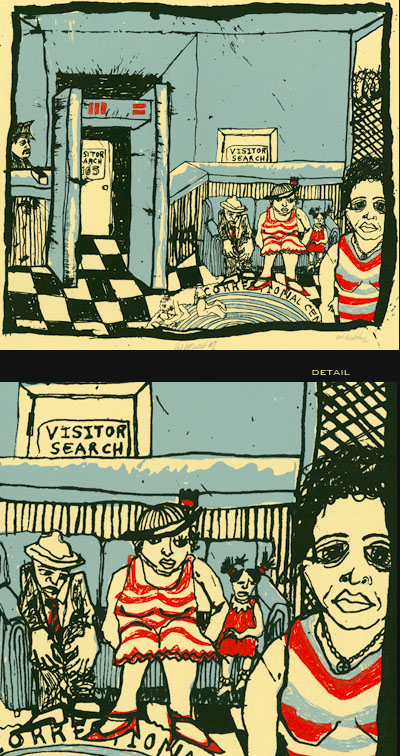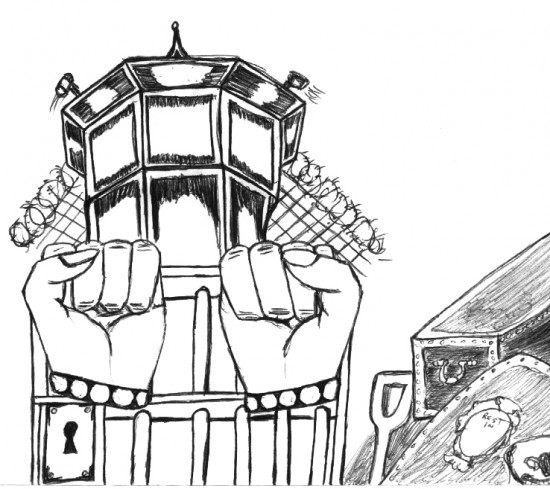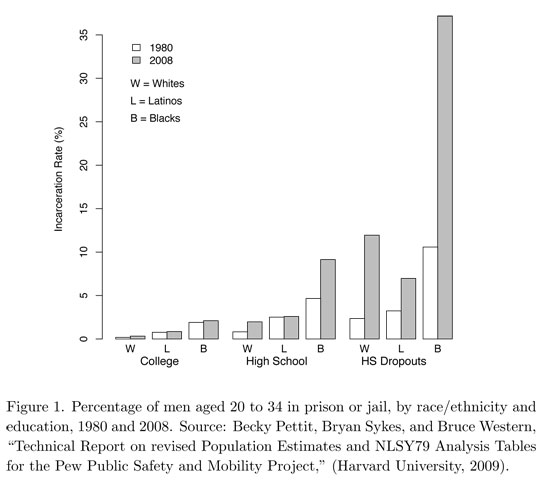Concrete Proof that Prisons Do Not Work: T.I. Is Back In Prison
 I have blogged about T.I. a couple of times in the last few weeks. The first time was to highlight a post-jail interview that he gave back in July describing the fact that prison had been a negative experience for him. I wanted to underscore the fact that prison is NOT a country club even for rich rappers contra what Lil’ Wayne has portrayed.
I have blogged about T.I. a couple of times in the last few weeks. The first time was to highlight a post-jail interview that he gave back in July describing the fact that prison had been a negative experience for him. I wanted to underscore the fact that prison is NOT a country club even for rich rappers contra what Lil’ Wayne has portrayed.
The next time I wrote about T.I. was to make a larger point about how his new song “Got Your Back” made me a bit queasy because of the expectations that were being conveyed to young women about staying or leaving a relationship with a partner who is incarcerated.
So I learned over the weekend that T.I. has been sentenced to 11 months in prison for violating his probation by being caught using drugs. Once again, the war on drugs has another casualty.
Below is a report about T.I.’s sentencing.
It seems like the general response to this tragedy is for people to suggest that T.I. should “not have gotten himself” into such a predicament. The sense is that he has to “pay the price” for violating probation. I have a different response which is that T.I. is a perfect candidate for being in a “community-based” setting to address his substance abuse issues. Prison disappears people and not their problems.
At his sentencing hearing T.I. whose real name is Clifford Harris Jr. asked for leniency:
“I screwed up,” said Harris, wearing a three-piece gray suit. “I screwed up bigtime, and I’m sorry. I’m truly and sincerely sorry. I don’t want and I don’t need to use drugs anymore. I want them out of my life.”
Another account reports that he said this:
“I want drugs out of my life. If I can get the treatment and counseling I need … I can beat this,” T.I. told the judge, according to U.S. attorney spokesman Patrick Crosby. “I need help. For me, my mother, my kids, I need the court to give me mercy
He did not get leniency. Instead the judge took an opportunity to lecture T.I.
But Pannell was unmoved.
“The worst thing is this case was an experiment,” Pannell said. The judge said he hoped the extraordinary sentence Harris initially received would work and could be adapted for use in other cases.But then Pannell looked at Harris and said: “You certainly dumped a lot of smut on the whole experiment.”
Pannell had sentenced Harris to a year and a day in prison for his 2007 arrest on weapons charges. The unprecedented deal shaved almost four years off a potential sentence, provided Harris perform 1,000 hours of community service. The service, which he completed, consisted largely of visits with schoolchildren to speak out against violence, gangs and drugs.
The Defense asked that T.I. be allowed to participate instead in a community-based alternative. They were rebuffed:
Defense attorney Steve Sadow asked Pannell to sentence Harris to six months’ home confinement and allow him to be admitted into an inpatient rehabilitation program. After that, he would receive more therapy and submit to urine screens three times a week.
But Pannell said he would have imposed a longer sentence the first time if he had known Harris was going to be back in court as he was Friday.
Pannell told Harris that he will be on probation again after his release from prison and could get up to three years more time if he commits another offense. And he told the rapper that while on probation the next time, he is not to drive a car.
“He is not going to be found cruising the streets of L.A. again … while serving my sentence,” the judge said.
As I mentioned before, this situation is tragic for T.I., his wife, and their children. I think that those who are reporting on this story are missing the main point which is that prisons DO NOT WORK. This man was incarcerated. He had a substance abuse problem before he was locked up and still had it when he was released. It was not addressed.
The larger context is that this case is yet another example of the failed war on drugs. We should not be criminalizing drug users. The emphasis should be on TREATMENT for those who want it.
The final important point to make here is the one about recidivism. Particularly, T.I. like so many ex-prisoners is being put back in jail for a technical parole violation. The entire criminal legal system is ineffective, immoral, inhumane and badly in need of transformation.



